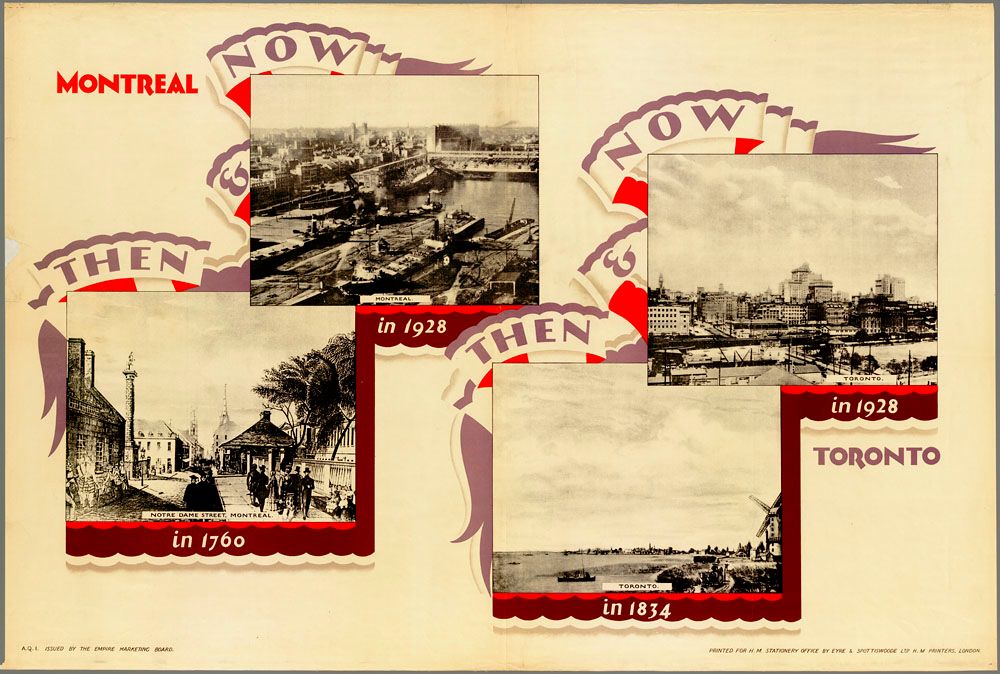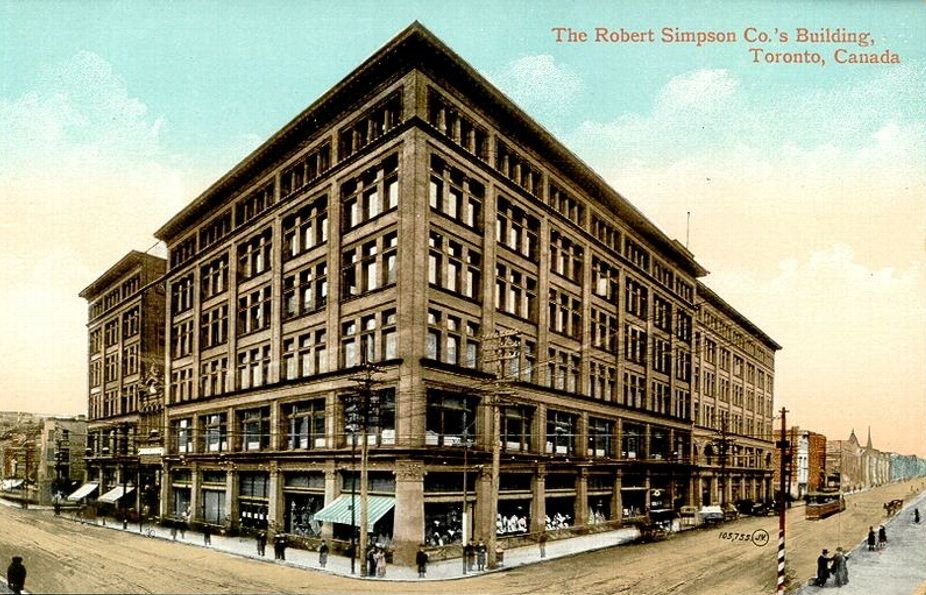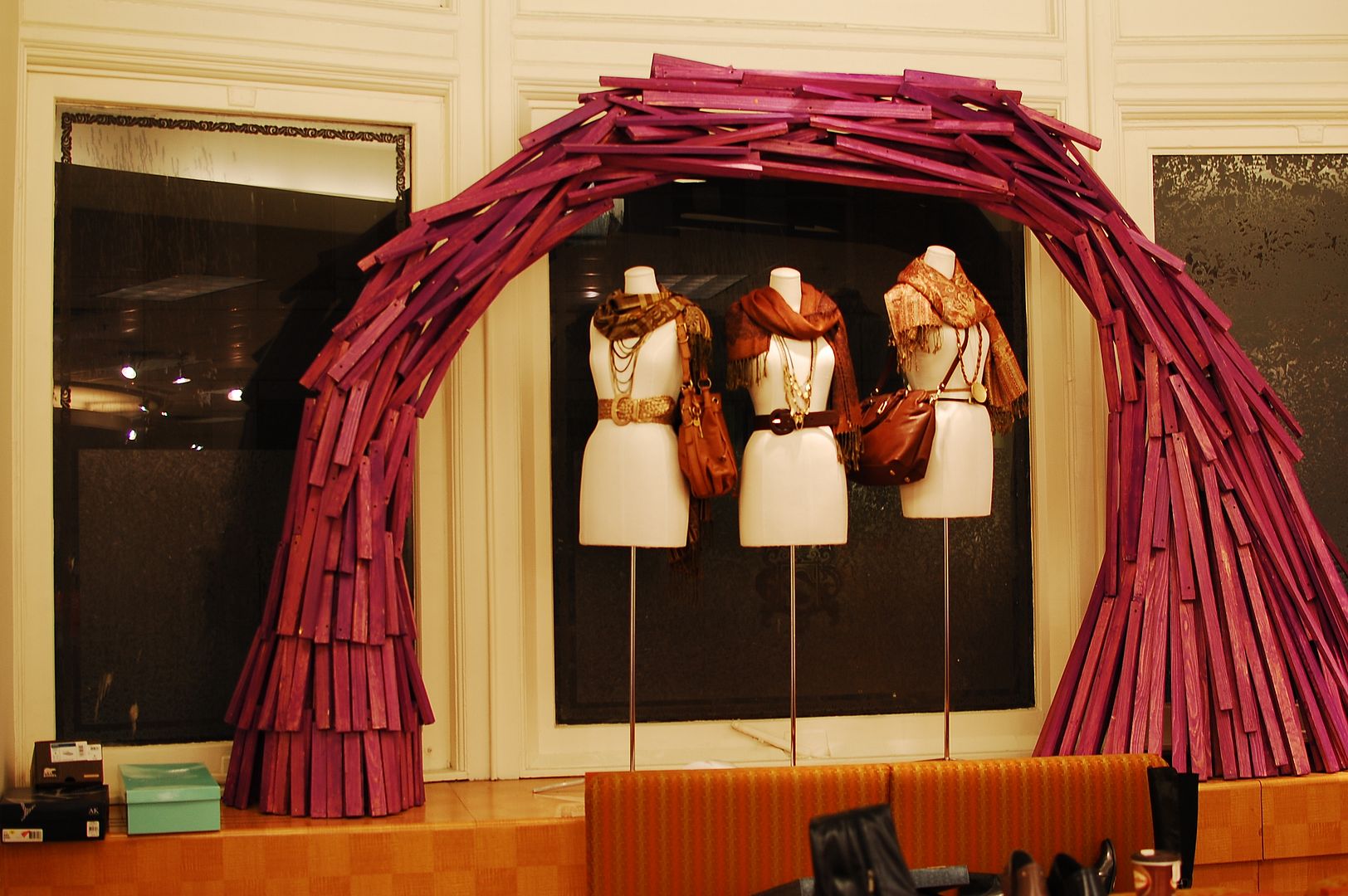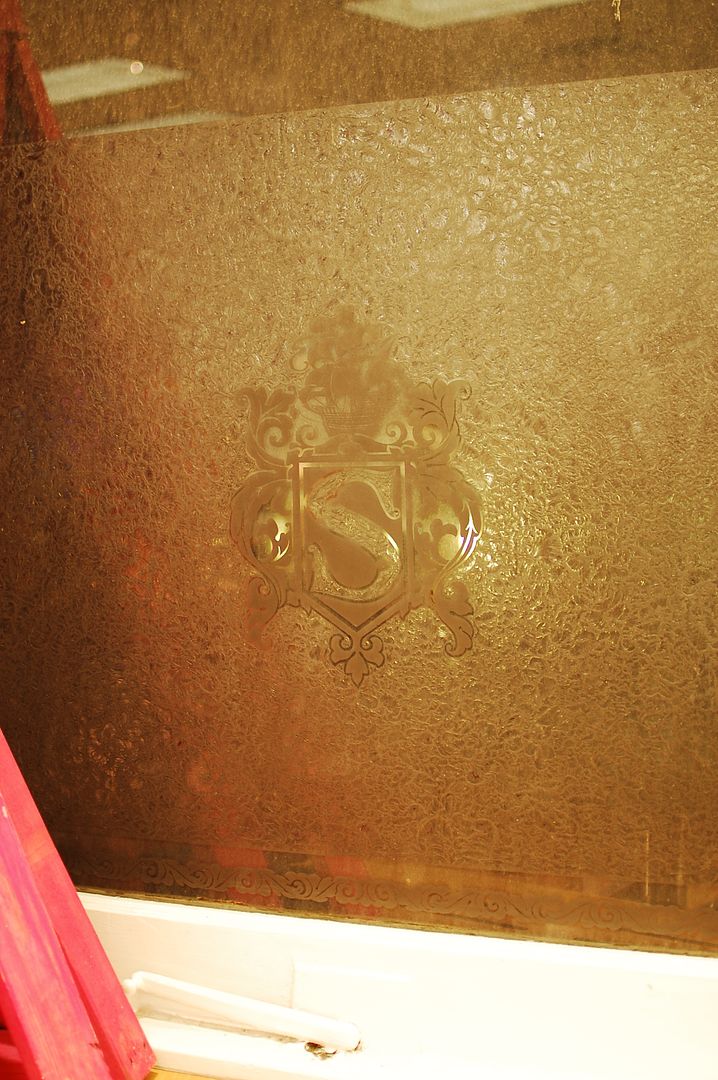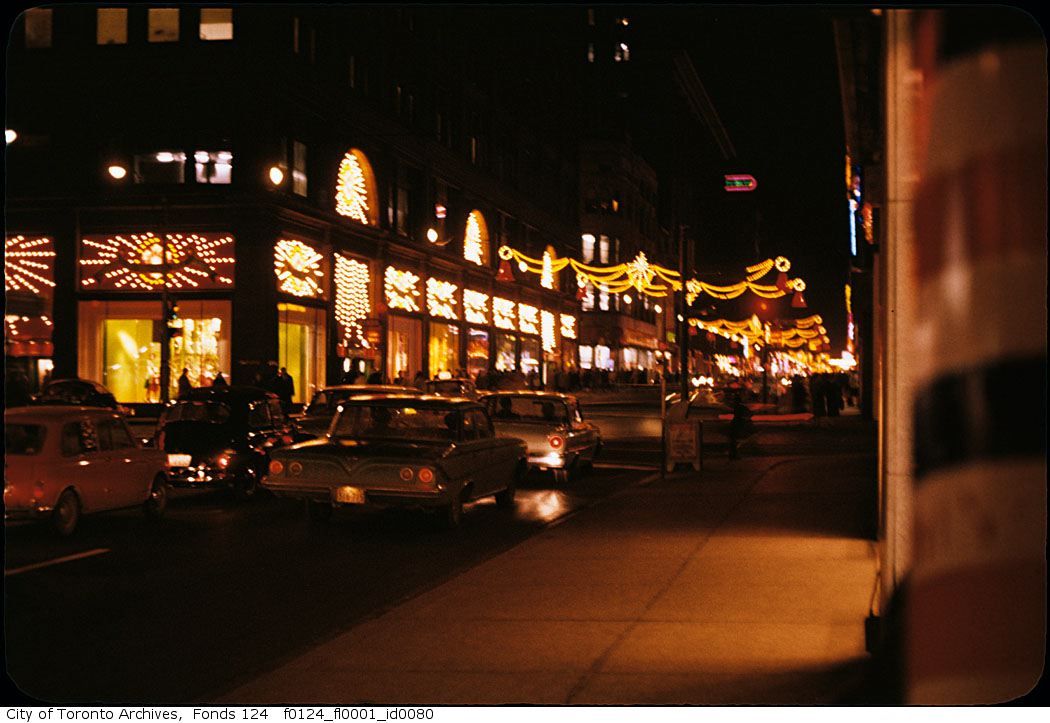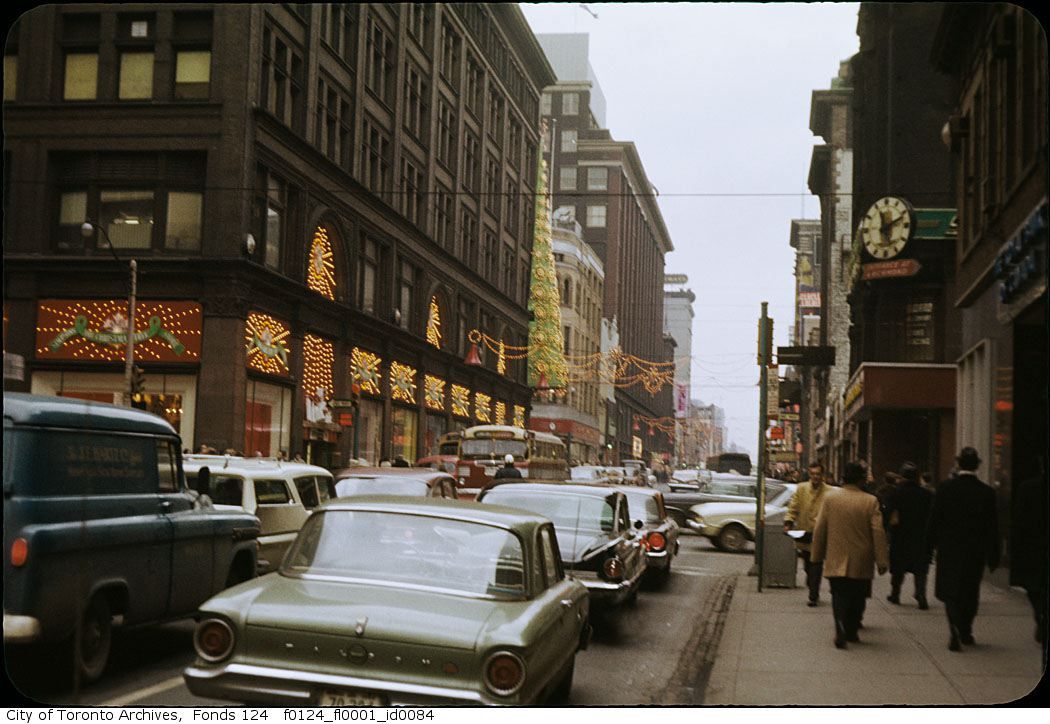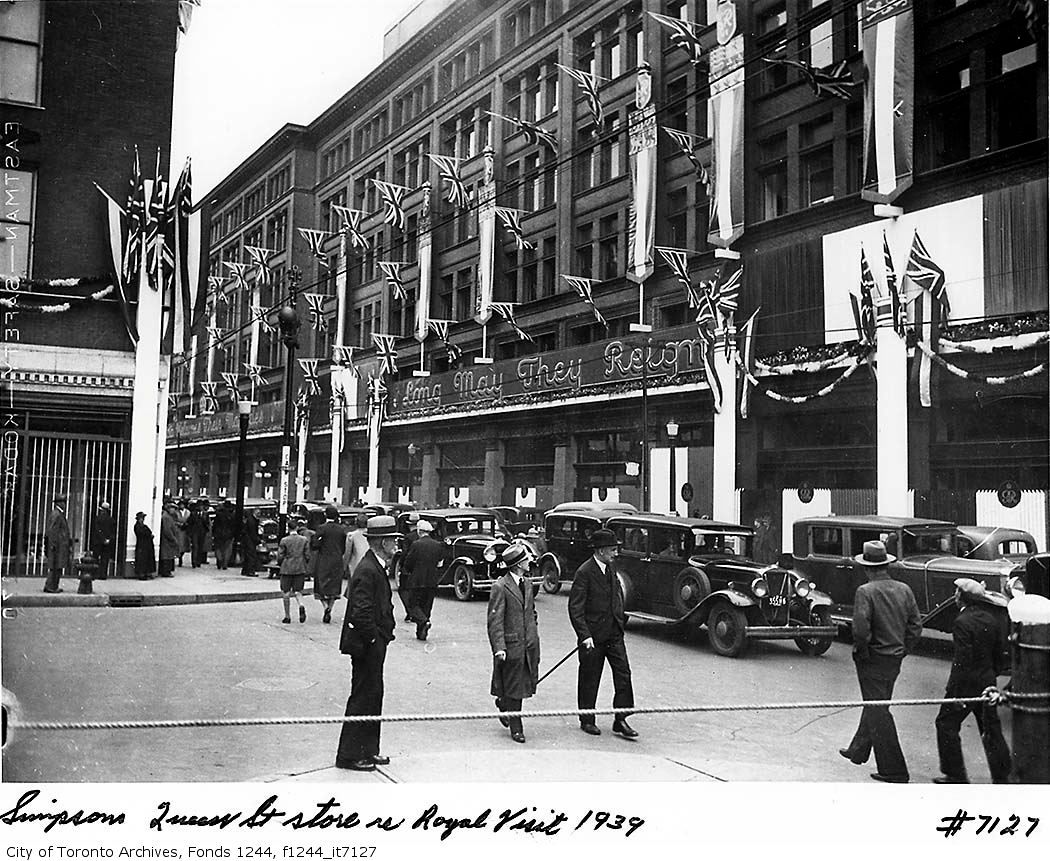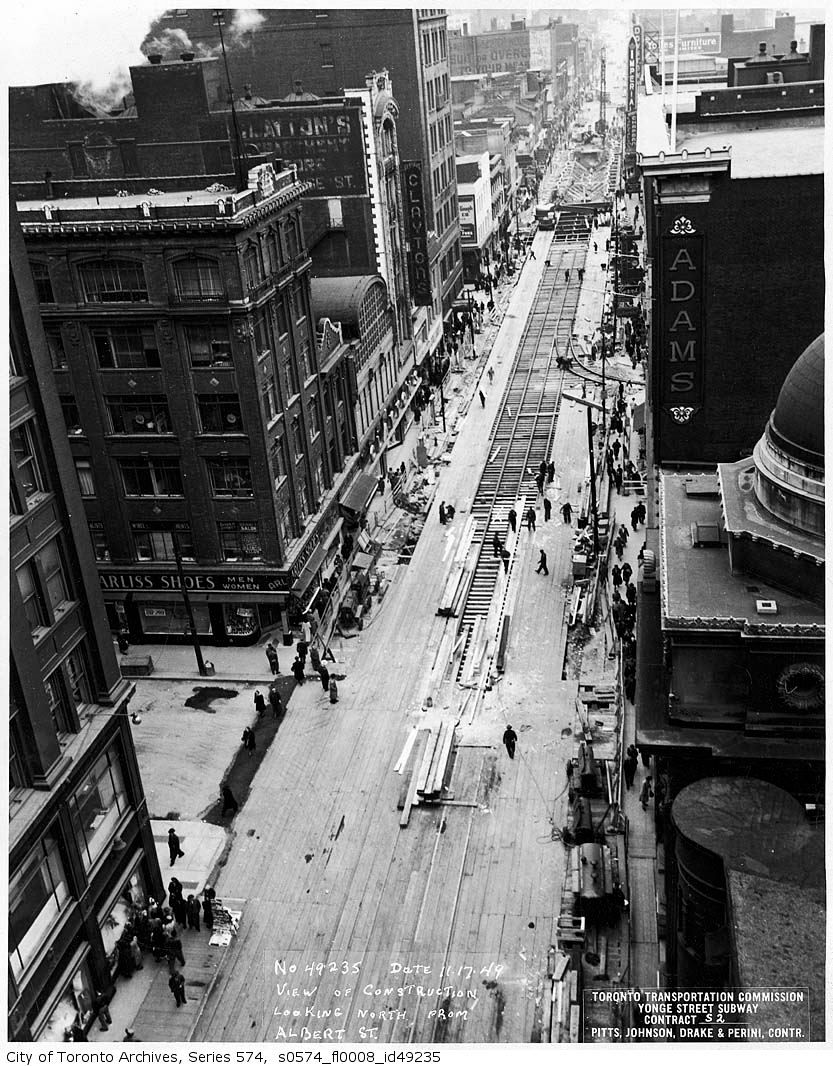I hope everyone is having a good weekend.
It's Saturday evening on the 2nd floor of the Queen Street Bay store - in the shoe department. This of course, is the former Simpsons store - the ownership and name change happened in 1991.
I'm here with the missus who is shopping for new kicks. See yellow circled area for my location.

So I'm gazing across the room [Yeah honey, they look waterproof, and the heels aren't so high that you can't walk to work in them] and I see an old bay window..
I walk up closer to gaze upon a mighty old piece of glass; 115 years old to be exact. That pane of glass was installed in 1896. And that window is painted shut, the everything-works-in-good-order part of me hates to see that sort of thing but in this instance I understand.
